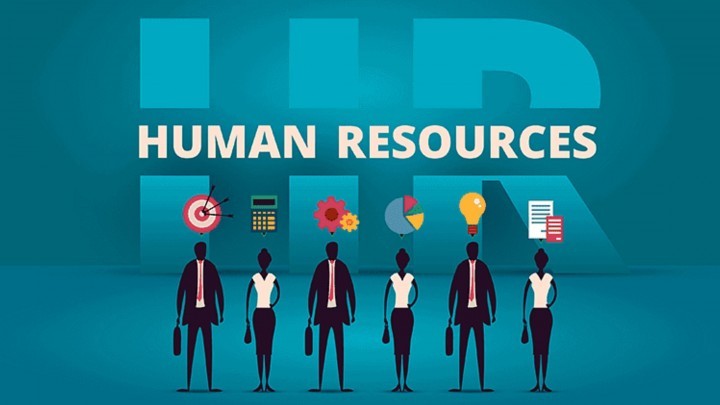
Importance of an Employee Handbook
If you ever started to believe there was no purpose for an employee handbook, think again. They are an essential tool for HR leaders and it’s not just about setting policy and staying compliant. The best employee handbooks offer a reminder of a company’s vision and purpose and help employees throughout their tenure. An employee handbook or manual is also a great opportunity to introduce new employees to your company’s culture.
In this blog, HRavailable will take a closer look at how an employee handbook can help set a clear outline of all the company policies and can also help shielding your company from any legal trouble. Let us understand how an employee handbook can help small and medium-sized businesses establish that strong relationship right from the start.
What is an employee handbook?
An employee handbook is a compilation of your business's policies, procedures, working conditions, and behavioral expectations. It should include company-wide policy statements meant to govern the business.
Note that a handbook is not the same as a procedure manual. Instead, it’s an opportunity to create clarity for both employees and management around policies and expectations.
A well-written handbook can foster a stronger, more positive company culture, one in which policies are clearly defined and consistently, uniformly implemented. Individual departments may have additional specific protocols or procedures, but the primary purpose of an employee handbook is to provide a firm foundation for the overall business.
Bound, hard copy handbooks are not required. A handbook can be an electronic file stored online and shared electronically if employees and management can easily access it. It’s important to have documented acknowledgment that every employee has reviewed the handbook and agrees to follow the outlined policies outlined.
Purposes of an employee handbook
Here are eight reasons your organization should have one:
1. Introduces employees to your culture, mission, and values: Perhaps the most important aspect of your employee handbook is the introduction of new employees to your company culture and how they will fit in. This helps to foster a sense of pride and belonging, which studies show will help employees become more productive in a shorter period. The introduction section also includes a vision and mission statement. It also sets the standard for the employment relationship in general and provides a guidepost for the remaining policies communicated in the handbook.
The purpose is to answer the questions to let employees know what sets the organization apart, how the organization was established, and what the organization is passionate about.
2. Communicates to employees what is expected of them
A well-written handbook provides employees with a clear understanding of their responsibilities. The handbook also serves as a compass for the organization’s policies and procedures. For example, it advises employees on what the procedures are for requesting time off or a vacation. It advises employees whom they should contact when they have an unscheduled absence (and what the timing should be). It tells employees whom to go to if they have questions about any of the specific policies in the handbook. The handbook also communicates an employee’s general responsibilities regarding safety, timekeeping, and reporting. By providing clear, accessible information, handbooks ensure companies continue moving in the right direction.
3. Educates employees about what they can expect from management and leadership
An employee handbook provides objectives and leadership styles, as well as management best practices, to foster healthy management-employee relationships. It also outlines logistics, such as timekeeping requirements, hours of work, and pay periods. Further, a complete employee handbook advises employees of their various entitlements to leaves and annual vacation. These communicated policies help to eliminate confusion and inconsistencies that result when handbooks are silent on these topics.
4. Helps ensure key company policies are clearly and consistently communicated
No policy is effective if it is practiced inconsistently. A handbook will accurately communicate your organization’s policies regarding employment, conduct and behavior, compensation, and other policies and procedures you follow. Most importantly, managers can refer to the handbook when answering questions or making decisions regarding your policies and ensure their answers and actions are consistent with your policies and best practices.
5. Showcases the benefits you offer
Does your organization offer vacations, 401(k), health insurance, paid parental leave, or other benefits to employees? Make sure they know about these policies and the eligibility requirements by communicating them in the handbook. A robust benefits package can help you retain your best and brightest employees, so be sure they know about your full suite of offerings by communicating these in the handbook.
6. Ensures compliance with federal and state laws
No matter where you do business, or how many employees you have, you will be subject to state and federal employment laws. Your handbook not only communicates these various entitlements and obligations to employees but is useful in demonstrating that your organization strives to be compliant with these regulations.
7. Helps defend against employee claims
Unfortunately, employers should consider it a matter of when, and not if, they will face a lawsuit or similar challenge from a current or former employee. When this happens, one of the most useful documents you can provide your attorney or third-party investigator will be a copy of your handbook. A thorough and compliant employee handbook will help to show that the organization exercised “reasonable care” towards its employees. The employee’s signed acknowledgment page will show that the employee had an opportunity to familiarize themselves with the organization’s policies, a chance to ask related questions, knew whom they could turn to for help within the organization, and agreed to follow the terms and conditions of employment set forth by the organization.
8. Provides information about where employees can turn for help
Ultimately, you want employees to feel comfortable turning to a trusted member of management for help when they want to report workplace violations, obtain workplace-related assistance and get answers to any other questions they may have. When a handbook not only outlines one or two management individuals for an employee to turn to in these situations, but also designates another individual to turn to in the event the employee disagrees with the first decision, they are more likely to keep their complaints in-house, and this is a good thing for employers.
Remember, an employee handbook is a great opportunity to inform new employees, protect your organization and communicate your organization’s core values. It is very essential to make sure that you have the employee handbook updated and in place. So, HRavailable suggests you to take a few extra steps to construct an employee handbook to ensure a longer and stronger employer-employee bond.
HRavailable keeps you updated on the latest news in the UAE job market.
Get to know more in-depth knowledge on various HR-related topics visit HRavailable.
HRavailable keeps you updated on the latest news in the job market.
Get notified about the latest job openings through HRavailable and never miss a chance to get noticed by the recruiters.















































































































































